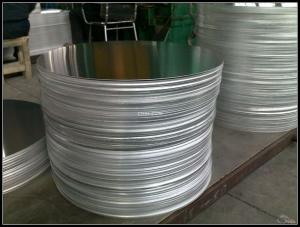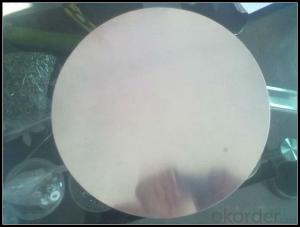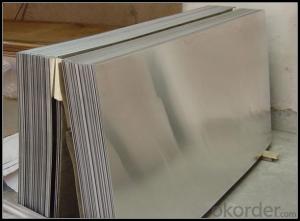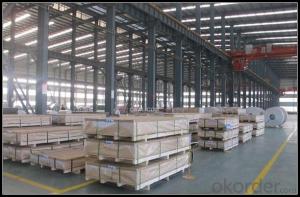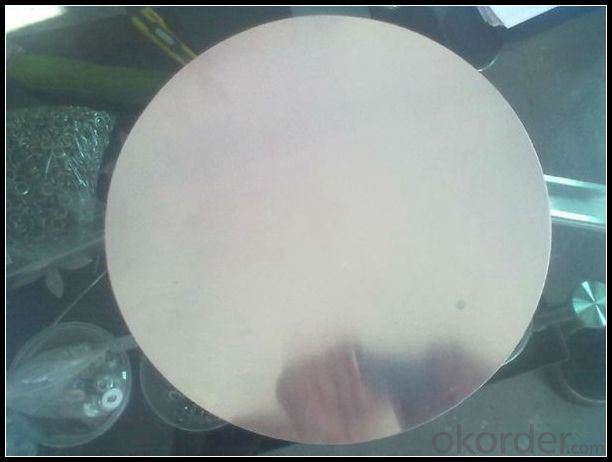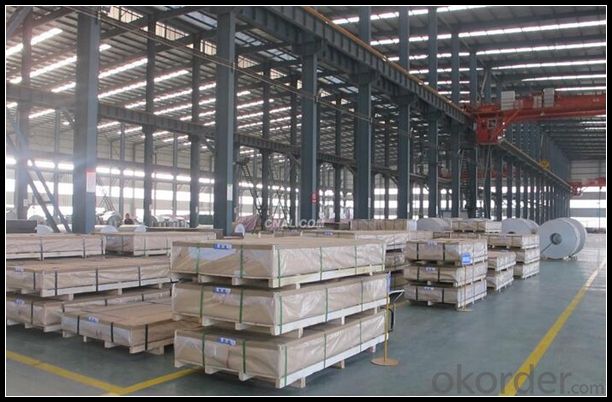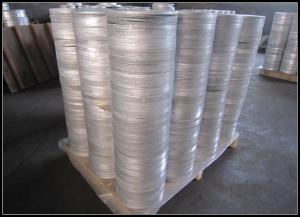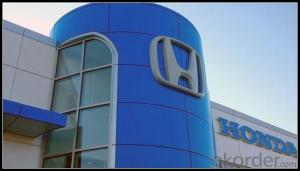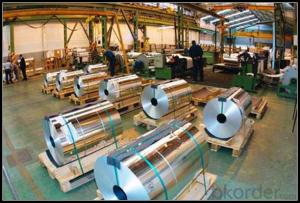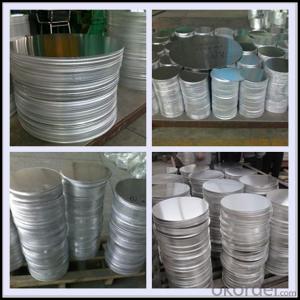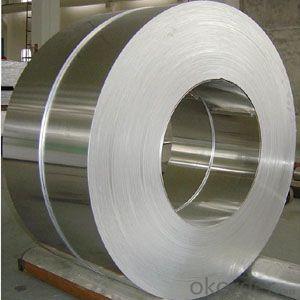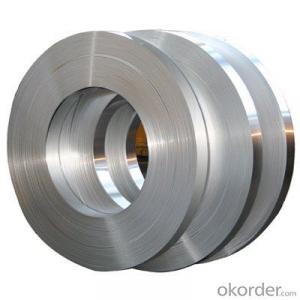1 Inch Aluminum Strips in 1060 1145 1050 1100 8011 3003 3004 5052 5083 6061
- Loading Port:
- Tianjin
- Payment Terms:
- TT OR LC
- Min Order Qty:
- 1 m.t.
- Supply Capability:
- 4999 m.t./month
OKorder Service Pledge
OKorder Financial Service
You Might Also Like
Specification
1. Specification of Aluminum
1) Alloy | 1050, 1060,1100, 3003 3004 3105 3005 5005 5052 etc |
2) Temper | O/H12/H14/H1/H18/H32/H34/H36/H38//H111/H112/H116/H321/T6/T651/T3/T351 etc |
3) Thickness | 0.1mm to 6mm |
4) Width | 20mm to 3300mm |
5) Coil weight | 100kgs to 6 tons depends on actual requirement |
6) Core material | Aluminum alloy |
7) Coil Inner diameter | 76mm, 152mm,or as required |
2. Application of Aluminum
(1).Interior: shutters, doors...
(2).Exterior: wall cladding, facades, roofing, canopies, tunnels,column covers , renovations...
(3).Advertisement: display platforms, signboards, fascia, shop fronts...
3. Feature of Aluminum
The -ium suffix conformed to the precedent set in other newly discovered elements of the time: potassium, sodium, magnesium, calcium, and strontium (all of which Davy isolated himself). Nevertheless, -um spellings for elements were not unknown at the time, as for example platinum, known to Europeans since the 16th century, molybdenum, discovered in 1778, and tantalum, discovered in 1802. The -um suffix is consistent with the universal spelling alumina for the oxide (as opposed to aluminia), as lanthana is the oxide of lanthanum, and magnesia, ceria, and thoria are the oxides of magnesium, cerium, and thorium respectively.
4. Certificate:
SGS and ROHS(if client request, paid by client), MTC(plant provided), Certificate of Origin(FORM A, FORM E, CO), Bureau Veritas and SGS (if client request, paid by client), CIQS certificate
5. Image of Aluminum
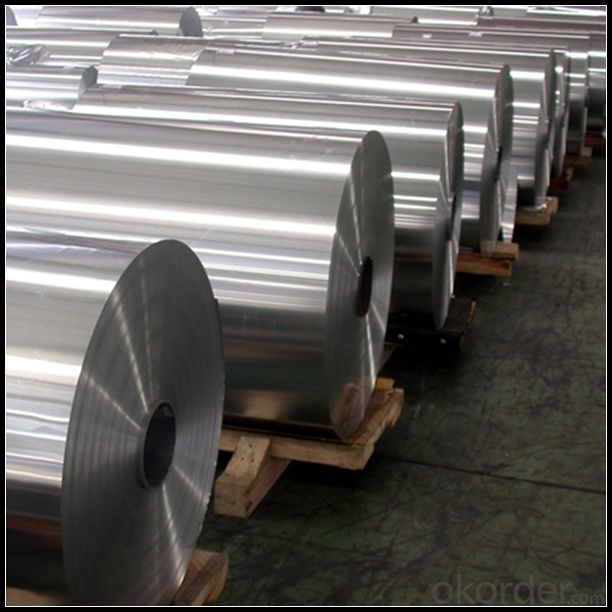
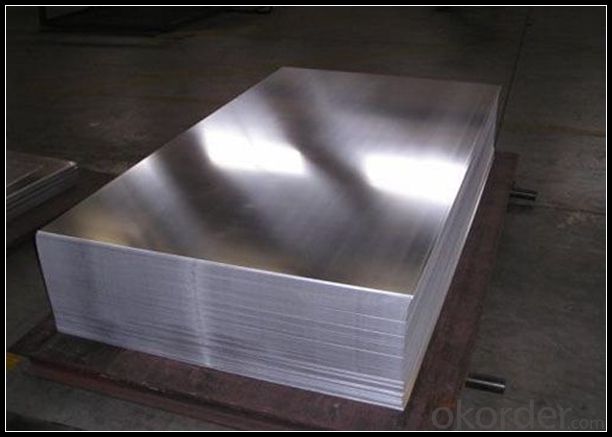
6. Our Service
1. Reply your enquiry in 24 working hours. |
2. OEM, buyer design, buyer label services provided. |
3. Exclusive and unique solution can be provide to our customer by our well traned and professional engineers and staffs. |
4. We can provide free sample for your check |
5. We have the certification of ISO 9001 |
6. Timely delivery |
7. Special discount and protection of sales area provided to our distributor. |
8. Good after-sale service. |
7. FAQ
Q: What is the produce prase? | ||||
A: Normally it would be 40days after received your deposit. | ||||
Q: Can you provide free samples? | ||||
A: Yes, free samples will be sent to you on freight at destination. | ||||
Q: Can I get your latest catalogue? | ||||
A: Yes, it will be sent to you in no time. | ||||
Q: What is the MOQ? | ||||
A: 3 tons | ||||
Q: What are your payment terms? | ||||
A: We accept L/C, D/A, D/P, T/T, West Union,etc. |
- Q: What characteristics of aluminum strips make them ideal for specific uses?
- <p>Aluminum strips are suitable for certain applications due to their lightweight nature, high strength-to-weight ratio, and excellent corrosion resistance. They are also known for their good thermal and electrical conductivity, making them ideal for heat sinks and electrical components. Additionally, aluminum strips are easily machinable and can be formed into various shapes, which is beneficial for manufacturing. Their non-magnetic properties are advantageous in applications where magnetic interference is a concern. Lastly, aluminum's recyclability and cost-effectiveness make it an environmentally friendly and economical choice for many industrial applications.</p>
- Q: This question asks whether aluminum strips are suitable for use in cold weather conditions.
- <p>Aluminum strips are generally suitable for cold climates. Aluminum has a low coefficient of thermal expansion, which means it doesn't expand or contract significantly with temperature changes. This property makes it resistant to the effects of cold weather. Additionally, aluminum is lightweight, durable, and corrosion-resistant, which are desirable traits in materials used in cold environments. However, it's important to consider specific applications and the quality of the aluminum strip, as certain alloys or treatments may affect performance in extreme cold.</p>
- Q: Is it possible to incorporate recycled materials into construction, specifically using aluminum strips for roofing?
- <p>Yes, you can use recycled materials in building construction. Aluminum strips are often made from recycled aluminum, which is a sustainable choice. Recycled aluminum requires significantly less energy to produce compared to new aluminum, reducing environmental impact. It's important to ensure that the recycled materials meet quality standards for construction and are sourced responsibly. Using recycled aluminum for roofing can contribute to a greener building project and help in waste reduction.</p>
- Q: Describe the process of manufacturing aluminum strips.
- <p>The production process of aluminum strips involves several key steps. Initially, raw aluminum ingots are melted in a furnace. Once molten, the aluminum is poured into molds to create billets. These billets are then heated and passed through a series of rollers to reduce their thickness and achieve the desired strip dimensions. This process, known as hot or cold rolling, is repeated multiple times to refine the strip's thickness and surface quality. After rolling, the aluminum strips may undergo annealing to improve ductility and strength. Finally, the strips are cleaned, coated if necessary, and cut to length before being packaged and shipped to customers.</p>
- Q: What is the ease of bending aluminum strips and what factors might affect this?
- <p>Aluminum strips can be bent relatively easily due to their malleability. The ease of bending depends on the alloy type, thickness, and temperature. Pure aluminum is softer and more ductile, making it easier to bend than aluminum alloys. Thinner strips are also easier to bend than thicker ones. Heating aluminum can increase its ductility, making it easier to bend without breaking. However, excessive force or improper bending can cause the strip to crack or deform.</p>
- Q: This question asks for a comparison of the benefits and drawbacks of using aluminum strips.
- <p>Aluminum strips offer several advantages, including high strength-to-weight ratio, making them lightweight yet durable. They are also corrosion-resistant, which is beneficial in various environments. Aluminum is a good conductor of heat and electricity, which is useful in applications requiring thermal or electrical conductivity. Additionally, aluminum is cost-effective and widely available. Disadvantages include its lower strength compared to some other metals, making it less suitable for heavy-duty applications. It can also be prone to denting and is not as easily repaired as some materials. Lastly, while it's recyclable, the recycling process can be energy-intensive.</p>
- Q: This question asks about the impact of aluminum strips on the performance of vehicles. It seeks to understand how these strips influence the vehicle's operation and efficiency.
- <p>Aluminum strips can affect vehicle performance in several ways. They are often used in the construction of lightweight vehicles to enhance fuel efficiency by reducing overall weight. Aluminum's high strength-to-weight ratio makes it ideal for vehicle components, improving structural integrity without adding excessive weight. Additionally, aluminum strips can be used in heat exchangers for cooling systems, which can improve engine performance by maintaining optimal operating temperatures. However, the use of aluminum strips must be balanced with considerations of cost, corrosion resistance, and recycling potential, as these factors can also influence vehicle performance and lifecycle costs.</p>
- Q: This question asks if aluminum strips can be used as a substitute for conventional roofing materials in regions with cold weather conditions.
- <p>Yes, aluminum strips can be used to replace traditional roofing materials in cold climates. Aluminum is a lightweight, durable, and corrosion-resistant material that can withstand harsh weather conditions, including snow and ice. It is also low maintenance and has a long lifespan. However, it's important to consider thermal insulation properties, as aluminum is a poor insulator. Proper insulation and underlayment should be used to prevent heat loss and protect the structure from moisture. Additionally, ensure that the installation meets local building codes and consult with a professional to address any specific concerns related to cold climates.</p>
- Q: Is it possible to use aluminum strips for creating electrical connections?
- <p>While it is technically possible to use aluminum strips to make electrical connections, it is not generally recommended due to several reasons. Aluminum has a higher electrical resistance compared to copper, which is the standard material for electrical wiring. It is also more prone to corrosion and can form aluminum oxide, which is an insulator, leading to poor connections over time. Additionally, aluminum expands and contracts more than copper with temperature changes, which can cause connections to loosen. For reliable and safe electrical connections, copper or other approved materials should be used.</p>
- Q: What is the standard thickness for aluminum strips and what is it commonly used for?
- <p>The thickness of aluminum strips can vary widely depending on their application, but common thicknesses range from 0.005 inches (0.127 mm) to 0.5 inches (12.7 mm). Aluminum strips are typically used in various industries such as construction, automotive, aerospace, and packaging. They are utilized for manufacturing parts, creating foils, and in applications requiring lightweight, strong, and corrosion-resistant materials.</p>
Send your message to us
1 Inch Aluminum Strips in 1060 1145 1050 1100 8011 3003 3004 5052 5083 6061
- Loading Port:
- Tianjin
- Payment Terms:
- TT OR LC
- Min Order Qty:
- 1 m.t.
- Supply Capability:
- 4999 m.t./month
OKorder Service Pledge
OKorder Financial Service
Similar products
Hot products
Hot Searches
Related keywords
